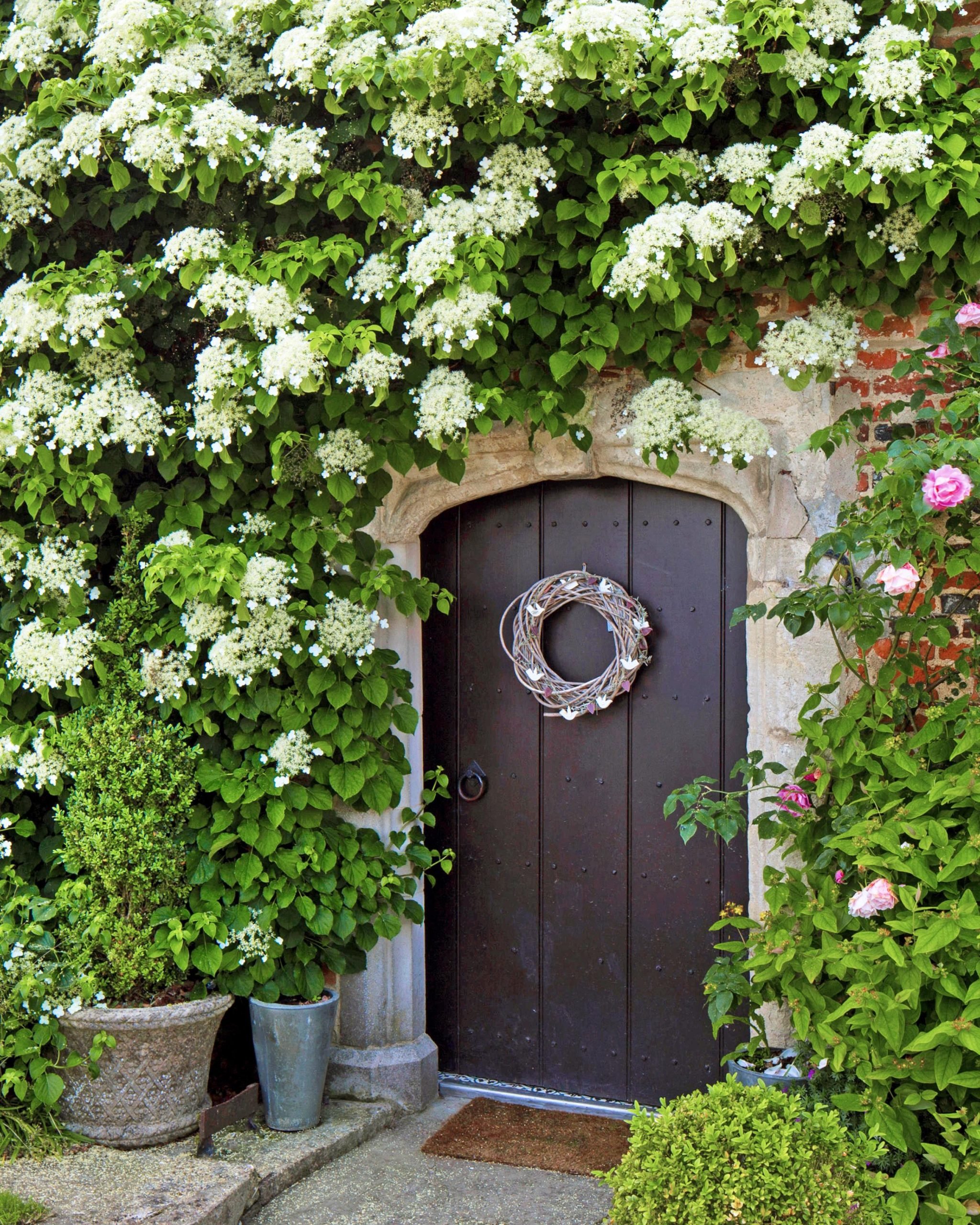Table of Contents
Climbing hydrangeas, or Hydrangea petiolaris, are deciduous vines that grow up to 50 feet long. Originally from Japan and Korea, they have lush green foliage and fragrant white flowers that bloom in late spring or early summer. These plants are popular among gardeners due to their versatility, aesthetic appeal, and hardiness. They can cover walls or trellises with large colourful flowers, attracting pollinators like bees and butterflies.
Climbing hydrangeas are easy to maintain and can be grown by gardeners of all levels of experience. They are resistant to pests and diseases, can grow in different soil types, and are drought-tolerant once established. However, like any plant, climbing hydrangeas can face problems. If you encounter any climbing hydrangea problems, it’s best to identify the issue and take appropriate action to prevent further damage.
Tips for Planting Climbing Hydrangeas
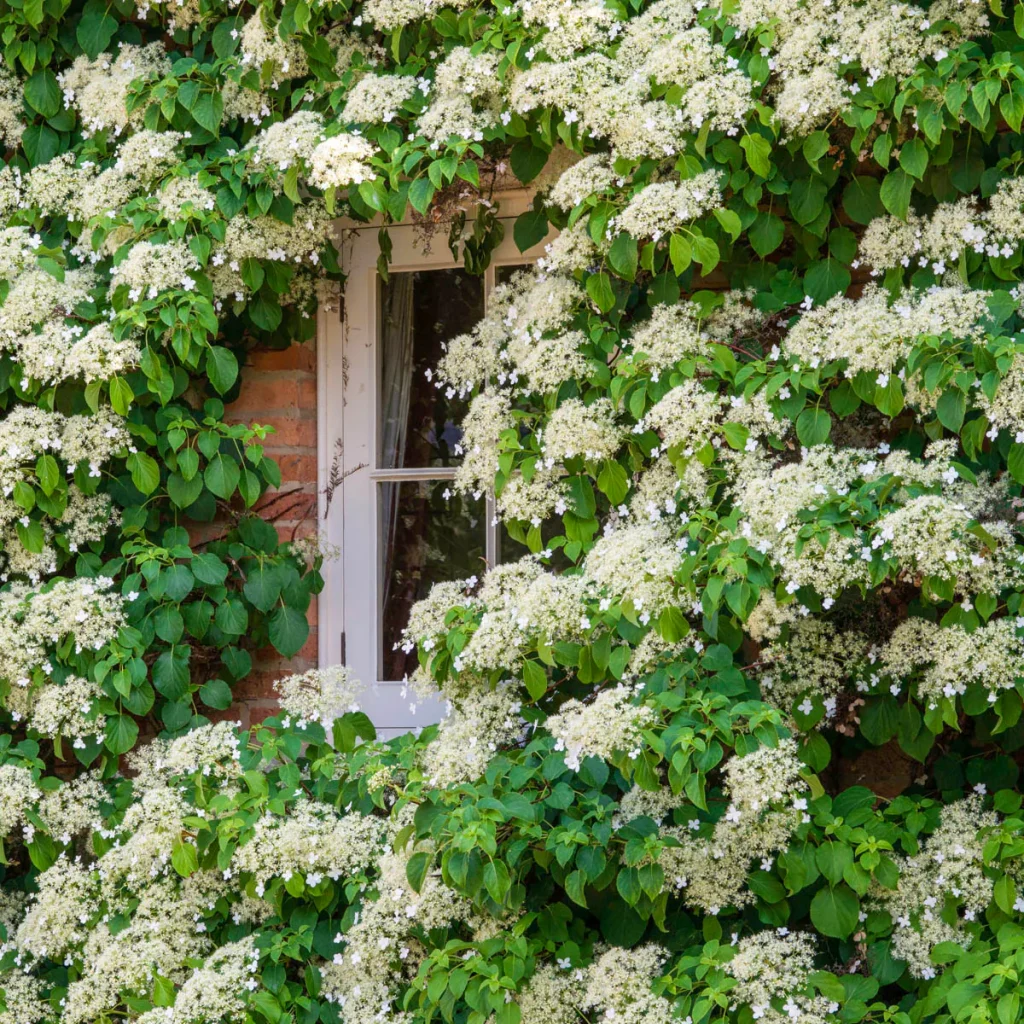
Consider the soil, the light, the time of day, and the watering requirements of the plant when planting climbing hydrangeas. Here are some tips to help you plant climbing hydrangeas.
- Planting climbing hydrangeas in early spring or autumn is the best time. Planting in spring will allow the plant to set its roots before the summer heat. While planting in fall allows the plant time to establish itself before winter inactivity.
- The plant is like fertile, well-drained soils that are rich in organic material. The pH of the soil should be between 5.0 and 6.5% acidic. Before planting, it’s a great idea to add compost or manure to the soil to give it additional nutrients.
- Climbing Hydrangeas are more tolerant of morning sun than full shade. Avoid planting them where they receive direct afternoon sun as it can cause their leaves to burn and sag.
- The plant requires consistent moisture for growth but does not like sitting in waterlogged soil. Water deeply every week or two, depending on weather conditions and soil types. Mulching can help retain moisture and regulate soil temperatures.
- It is important to support climbing hydrangeas with trellises or arbours as they grow. In the spring, it’s a good idea to prune the plant to remove dead or damaged branches. This will promote healthy growth. Climbing hydrangeas are beautiful and can last for years in your garden with proper care and maintenance.
Types of Climbing Hydrangeas
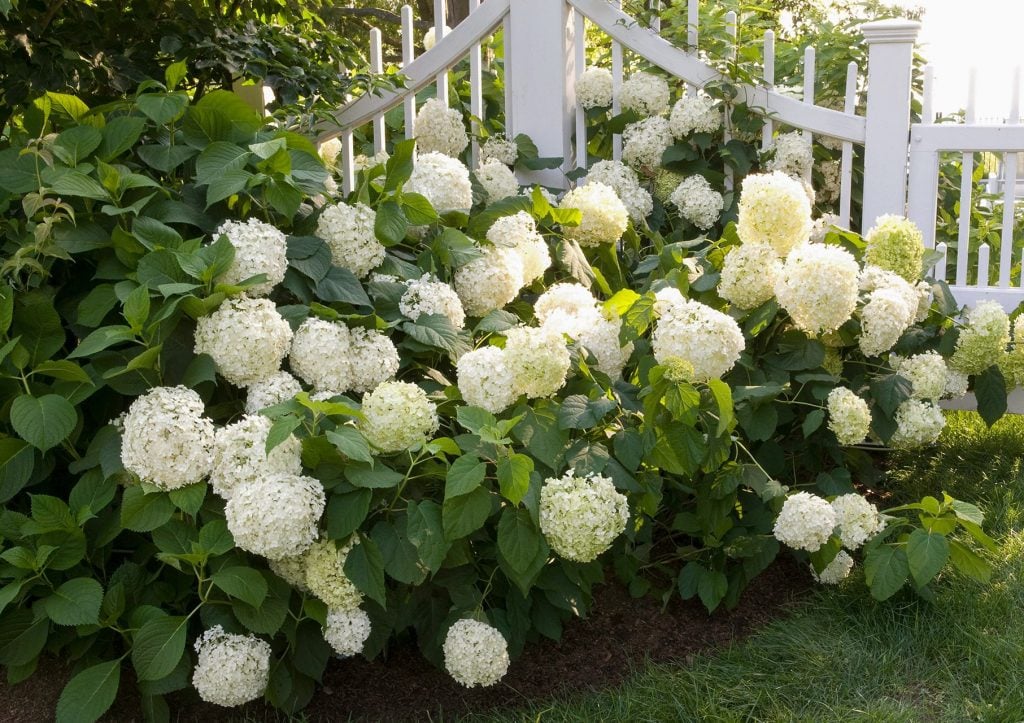
You can choose between several different types of climbing hydrangeas, each with its own characteristics and requirements. Here are a few of the most common types of climbing Hydrangeas.
- Hydrangea Petiolaris: Also known as Japanese climbing hydrangea, it blooms in early summer with large, fragrant white flowers. The leaves turn yellow as the season progresses. It likes to grow in partial or full shade, and it prefers moist soil that drains well.
- Hydrangea Anomala Subsp. Petiolaris ‘Miranda’: This cultivar features variegated, yellow-edged leaves. It is interesting even when the plant is not in bloom.
- Hydrangea Anomala Subsp. Petiolaris Skylands Giant: This cultivar’s leaves are larger than those of the species and can grow up to 10 inches in length. It is also cold-hardy and can tolerate lower temperatures.
- Hydrangea Serratifolia: A rare climbing hydrangea native to China. It is smaller than H. petiolaris and prefers less moisture and more sun than its Japanese counterpart.
- Hydrangea Integrifolia: A rare climbing hydrangea native to Japan. It blooms in early summer with small, fragrant, white flowers, and its leaves turn a reddish colour in the fall.
- Hydrangea Aspera: Also known as the rough-leafed hydrangea, this plant is a large, deciduous shrub that can grow up to 15 feet tall. It produces showy, mauve, or pink flowers in late summer.
- Hydrangea Seemanii: This evergreen climbing hydrangea has glossy, dark green leaves and produces fragrant white flowers in the summer. It can grow up to 50 feet long.
- Hydrangea Paniculata ‘limelight’: Although not a climbing hydrangea, this popular cultivar of the panicle hydrangea can be trained to grow up a trellis or other support. It produces large, cone-shaped flower heads that start out green and turn pink and then white as they mature. It can grow up to 8 feet tall.
Climbing Hydrangeas Care Guide
The plants are low-maintenance but do need some attention and care to stay healthy and look the best. Here are some tips on how to care for climbing hydrangeas:
- Pruning: Climbing Hydrangeas can benefit from regular trimming to encourage healthy growth and to control the size and shape of their plants. It is best to prune in early spring before the new growth begins. Trim back overgrown or unwanted growth and remove any damaged or dead branches. You can also trim the tips of branches if the plant becomes too large and spreads too much. Avoid pruning climbing hydrangeas during the summer months, as it can remove the flowers that will appear the next year.
- Fertilization: It does not require heavy fertilization but will benefit from an occasional feeding of a balanced, slowly-released fertilizer. Fertilize in early spring when new growth begins and in early fall after the flowering is complete. Over-fertilizing can cause excessive growth of foliage at the expense of flowers.
- Pests and Diseases: It can be susceptible to aphids or scale insects. It may also suffer from powdery mildew. Early detection of problems can be achieved by regularly monitoring the plant. Use insecticide soap or horticultural oils to control scale insects and aphids, while fungicides are effective against powdery mildew.
- Winter care: Climbing Hydrangeas can withstand cold temperatures in winter, but you should still provide them with winter care to protect against harsh weather conditions. Mulch the plant’s base with organic materials, like leaves or straw. This will help to insulate and protect the roots from freezing. Wrap the plant in burlap, or another protective material, to protect it from wind and snow.
Climbing hydrangeas are a beautiful addition to your garden. The plant can last for years if proper care is taken. Regular pruning, fertilization, and pest and disease monitoring can keep the plant looking healthy. When winter comes, extra protection will help the plant to survive and bloom the next year. Climbing hydrangea problems can arise if proper care is not taken.
How to Propagate Climbing Hydrangea
The process of propagation is to create new plants by dividing existing ones. There are several different ways you can do this with climbing hydrangeas. These are the two most common ways to propagate these plants, along with some of the issues that may arise.
Propagation Through Layering
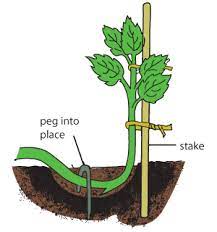
Layering is an easy method of propagation. It involves encouraging the plant’s roots to grow while it remains attached to its parent plant. Select a low-growing stem, and remove all leaves at the bottom of it. Bury the stem in the soil and leave the top exposed. Secure it with a U-shaped wire. Wait several months for the new roots to form. Once the new plant is established, it can be separated from the parent and transplanted.
Propagation Through Cuttings
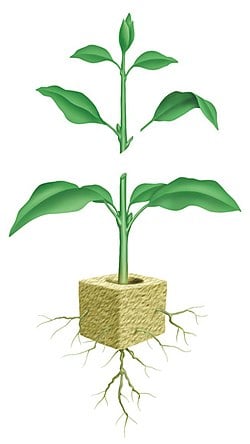
To propagate climbing hydrangeas using cuttings, you take a stem cut from the parent plant. You then encourage it to grow new roots. Make a clean cut below the node of a healthy stem, and then remove all the leaves on the lower half. Dip the cut end into the rooting hormone, then plant it in a moist potting mix. Place the container in a bright, warm location and cover it with a dome or plastic bag to create humidity. Once the cutting has developed new roots, it can be planted in its permanent location.
Climbing Hydrangea Problems
- Failure to flower is one of the most common issues with climbing hydrangeas. It can be due to a number of things, such as too much shade or improper fertilization. For a plant to flower, it must receive enough sunlight. Avoid pruning during the summer and use a balanced fertilizer.
- Slow growth is another problem that can occur with climbing hydrangeas. It can be due to a lack of nutrients, inadequate sunlight, or poor soil conditions. For healthy growth, ensure the plant gets enough sunlight. Fertilize occasionally with a balanced fertilizer. And make sure that the soil drains well and is rich in organic material.
- Leaf scorch is a problem that climbing hydrangeas often face, especially during hot and dry weather. Lack of water or too much sun exposure can cause this. Water the plant regularly and deeply to prevent scorching of the leaves. Also, provide shade during the hotter part of the day.
Conclusion
Climbing hydrangeas, also called Hydrangea petiolaris, are deciduous vines that were introduced to Europe and North America from Japan and Korea in the early 1900s. These plants are popular among gardeners due to their versatility, aesthetic appeal, and hardiness.
Climbing hydrangeas can cover unsightly structures, attract pollinators with their fragrant flowers, and add interest to walls. However, they can also experience issues like pests and diseases, which should be identified and treated promptly.
Climbing hydrangeas prefer consistent moisture and well-drained, organic soils with a slightly acidic pH between 5.0 and 6.5%. They can be pruned and fertilized in early spring and early fall to promote healthy growth.
However, like any plant, climbing hydrangea problems may occur, so it’s best to identify and address any issues to prevent further damage.
Frequently Asked Questions
What Is the Best Time to Plant Climbing Hydrangeas?
The best time to plant climbing hydrangeas is in the spring or fall when the temperatures are cooler, and there is less chance of the plant becoming stressed from extreme heat.
What Type of Soil Does Climbing Hydrangeas Prefer?
Climbing hydrangeas prefer well-draining soil that is rich in organic matter. They can tolerate a range of soil types but prefer slightly acidic soil with a pH between 5.5 and 6.5.
Do Climbing Hydrangeas Need Full Sun or Partial Shade?
Climbing hydrangeas prefer partial shade to full shade. They can tolerate some morning sun but should be protected from the hot afternoon sun.
Can Climbing Hydrangeas Be Grown in Containers?
Yes, climbing hydrangeas can be grown in containers, but they will need a large container with good drainage and support for their vines. They may also need more frequent watering and fertilization than if planted in the ground.

